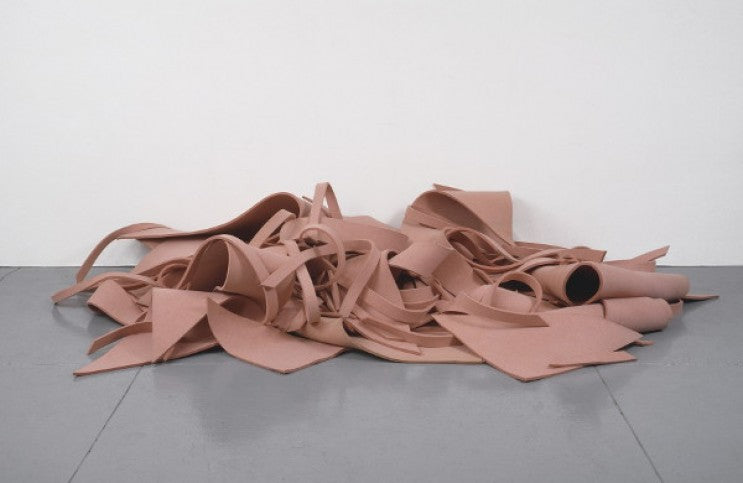
Robert Morris - An Artist and Sculptor Like No Other
Robert Morris defined art by barely defining it at all. He said, “Art is primarily a situation.” Rephrasing that in human terms, imagine if you met Morris at a party and he was introduced to you as “Robert Morris, Artist.” Your reaction to that introduction would be much different than if he was introduced as, say, “Robert Morris, Scientist,” or “Robert Morris, Plumber.” Each label has its own connotations. How you would react to each would depend on many things, like the type of party it is, who the other guests are, and what your own personal assumptions are about artists, scientists and plumbers. Now apply that same line of thinking to art. For example, consider the iconic Morris work Untitled (Pink Felt) (1970). This piece basically consists of a bunch of pink felt strips thrown in a pile on the floor. If you were to encounter it for the first time, you would of course immediately begin interacting with it intellectually. But the direction your intellect would take you in would be much different if you were told the pile of felt is art than if you were told it is scraps left over from a construction project. Like anything else in life, art is not defined by its physical description, its formal qualities, or even its conceptual foundation. Circumstances are everything. Something could be art or it could not be art—it all depends on the situation.
What Makes Art Work
Robert Morris began his college career as an engineering student, so maybe it is no surprise that he conducted his art career by demonstrating a fundamental awareness of the underlying processes that make things work. Not only had he always demonstrated an interest in the processes that lead to the creation of a work of art, but he had also shown an ongoing fascination in the underlying question of what a work of art is in a utilitarian sense—what its purpose is, what its meaning is, and what use it has to humanity. As part of his quest to discover the answers to these questions, he explored many different forms of artistic expression. In addition to painting, drawing and sculpture, he worked in the fields of dance, choreography, theater and music. Early in his art career, he became interested in the role movement plays in stage arts, and in the ways movement also relates to the plastic arts. He came not only to see aesthetic objects as relics of performative gestures, but to also see their final form as irrelevant, since the underlying processes of their creation were the true expression of the creative spark.
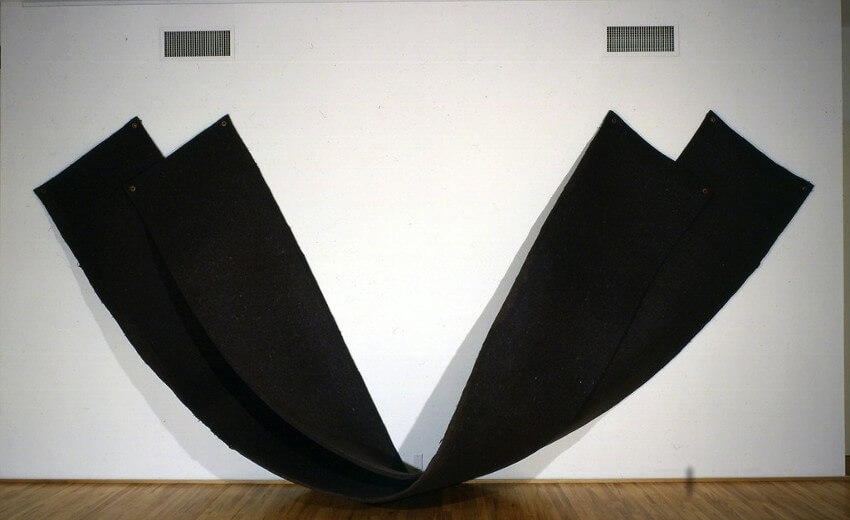 Robert Morris - Untitled, 1974, Dark gray felt, metal grommets, 107 × 220 × 43 in, 271.8 × 558.8 × 109.2 cm, Castelli Gallery, New York, © 2018 Robert Morris / Artists Rights Society (ARS), New York
Robert Morris - Untitled, 1974, Dark gray felt, metal grommets, 107 × 220 × 43 in, 271.8 × 558.8 × 109.2 cm, Castelli Gallery, New York, © 2018 Robert Morris / Artists Rights Society (ARS), New York
Two early works Morris created in 1969 clearly communicated his feelings on the creative process. One was called Untitled (Scatter Piece), and the other was called Continuous Project Altered Daily. Both were exhibited at the Leo Castelli Gallery Warehouse on West 108th Street in New York City. Scatter Piece was exactly what it sounds like—a bunch of objects scattered about in a space. Half of the objects were made of soft felt, and the other half were made of metal. The dimensions and appearance of the objects were determined by a mixture of randomness and arbitrary choices. Meanwhile, Continuous Project was a conglomeration of dirt and detritus acquired around the city. Every day, Morris would come in and make changes to Continuous Project, adding to it, subtracting from it, or moving elements of it around. The appearance or the arrangement of objects was irrelevant. The point of both works was just to have people come in and move around the various elements, so they could feel themselves in the presence of things and become part of the situation.
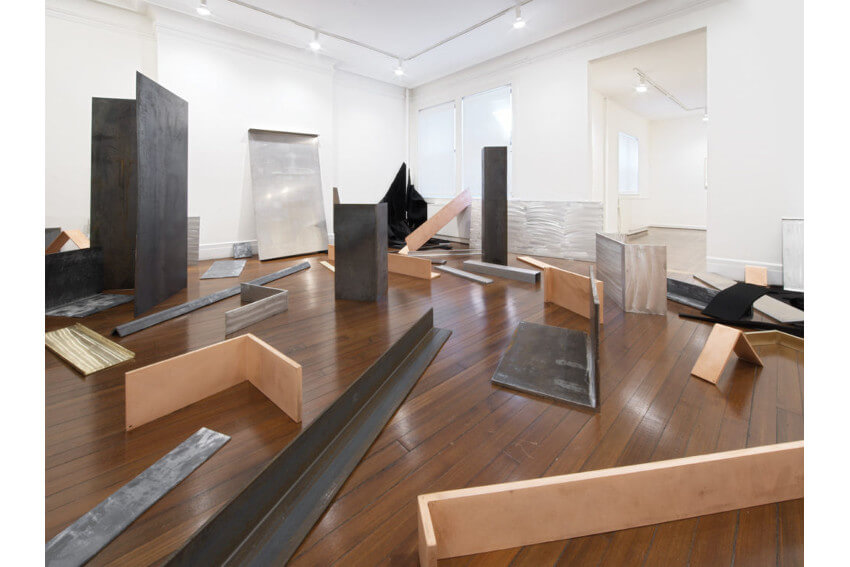 Robert Morris - Untitled (Scatter Piece), 1968-69, felt, steel, lead, zinc, copper, aluminum, brass, dimensions variable, installation view at Leo Castelli Gallery, New York. Photo Genevieve Hanson. © 2018 Robert Morris / Artists Rights Society (ARS), New York
Robert Morris - Untitled (Scatter Piece), 1968-69, felt, steel, lead, zinc, copper, aluminum, brass, dimensions variable, installation view at Leo Castelli Gallery, New York. Photo Genevieve Hanson. © 2018 Robert Morris / Artists Rights Society (ARS), New York
Awareness of Objects in Space
Morris continued to explore the notion that formal considerations are irrelevant by creating works for galleries and museums that used the simplest geometric forms. He made large cubes, “L” forms, squared arches and boxes. Each object was intended only to be interacted with by people in space. And in addition to making works for galleries and museums, Morris was also a pioneer in the Land Art movement. Land Art is art that exists outside and makes use of the natural environment. It tends to be ethereal and non-archival in essence. Morris used Land Art to eliminate a barrier between people and spaces designated for so-called art. One of his most monumental works of Land Art is The Observatory. Located in Flevoland, Netherlands, it consists of two concentric earth circles, on which grass now grows. Four entrances in the outer circle align with the sunrise on the equinoxes, making the work a sort of modern day Stonehenge.
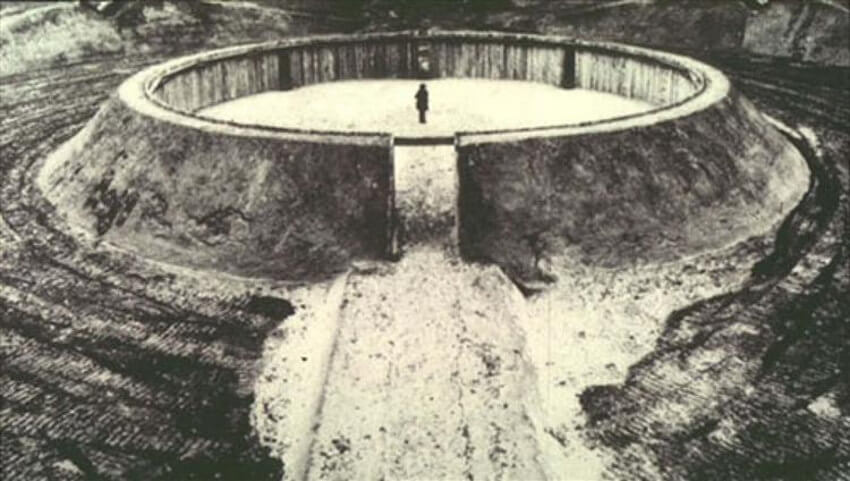 Robert Morris - Observatory, 1997, © 2018 Robert Morris / Artists Rights Society (ARS), New York
Robert Morris - Observatory, 1997, © 2018 Robert Morris / Artists Rights Society (ARS), New York
One of the most striking recent sculptures Morris made is his Glass Labyrinth, permanently installed on the grounds of the Nelson-Atkins Museum of Art in Kansas City, Missouri (the city where he was born). Seen from above, the labyrinth is a triangle intersected by a geometric maze. People enter the maze and work their way through the pathways until they find an exit. The walls are seven feet high and made of one inch thick glass. It is the clearest glass on Earth, so while people are walking through the maze they are unable to ascertain how many panes of glass are between them and the outside world. The work sums up much of what Morris is about. It is made of simple geometric forms, and yet it provides a profound physical experience; its presence is determined by the circumstances of its surroundings; it is intricately tied to nature; it is ephemeral, changing constantly as the ever-changing world is visible within it; and most importantly, its status as art is dependent on its situation—a situation that is never complete until one of us shows up to interact with it, and make it whole.
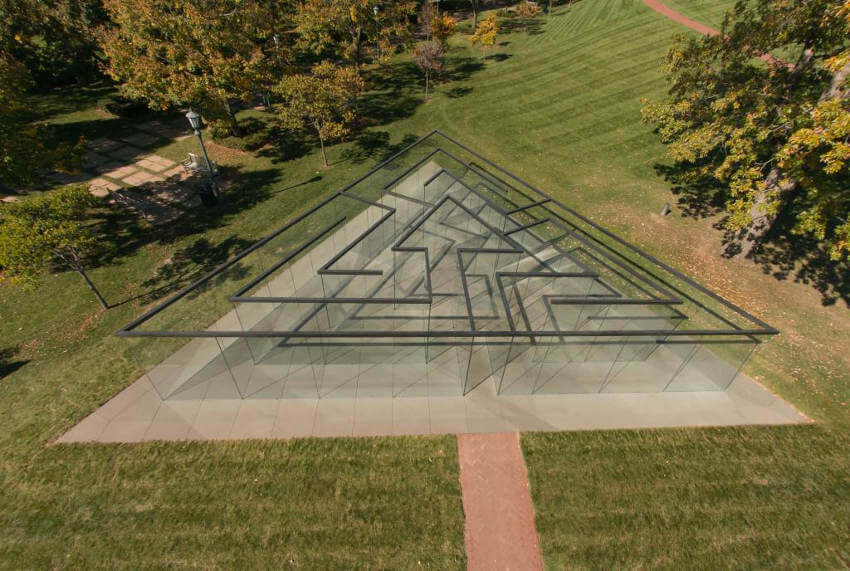 Robert Morris - Glass Labyrinth, 2013, Glass, steel, bronze and stone, 50 x 50 x 50 feet, 15.24 x 15.24 x 15.24 meters, © 2018 Robert Morris / Artists Rights Society (ARS), New York
Robert Morris - Glass Labyrinth, 2013, Glass, steel, bronze and stone, 50 x 50 x 50 feet, 15.24 x 15.24 x 15.24 meters, © 2018 Robert Morris / Artists Rights Society (ARS), New York
Featured image: Robert Morris - Untitled (Pink Felt), 1970, Felt pieces of various sizes, overall dimensions variable, Solomon R. Guggenheim Museum, New York Panza Collection, 1991, © 2018 Robert Morris / Artists Rights Society (ARS), New York
All images used for illustrative purposes only
By Phillip Barcio






